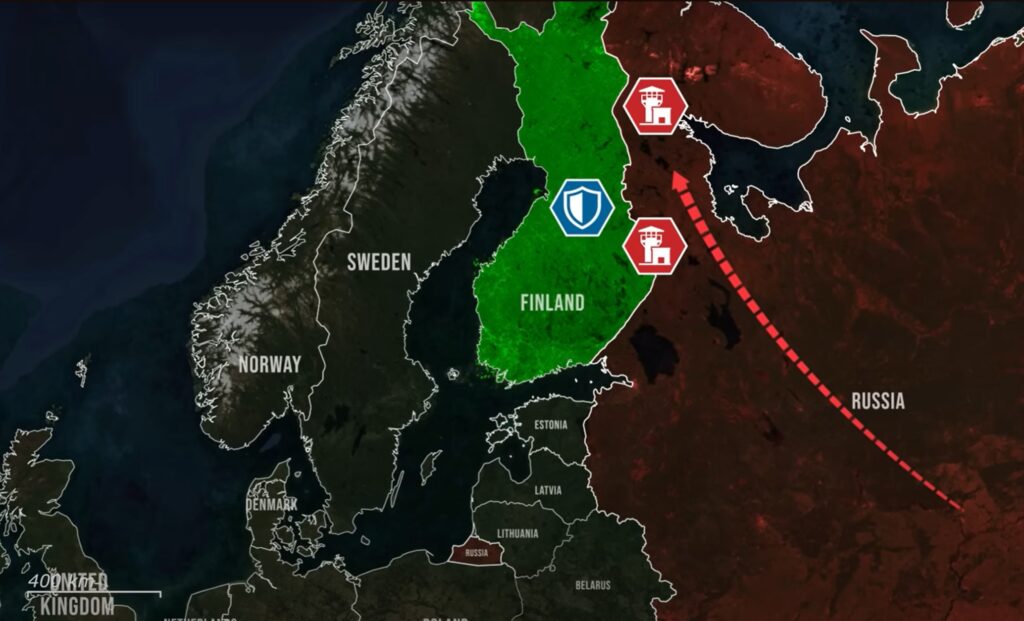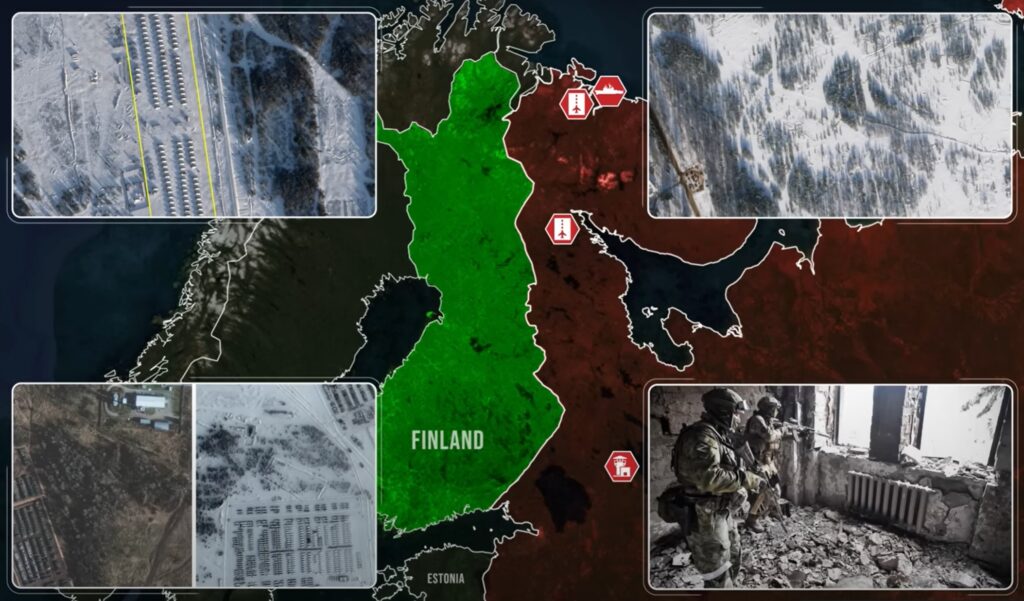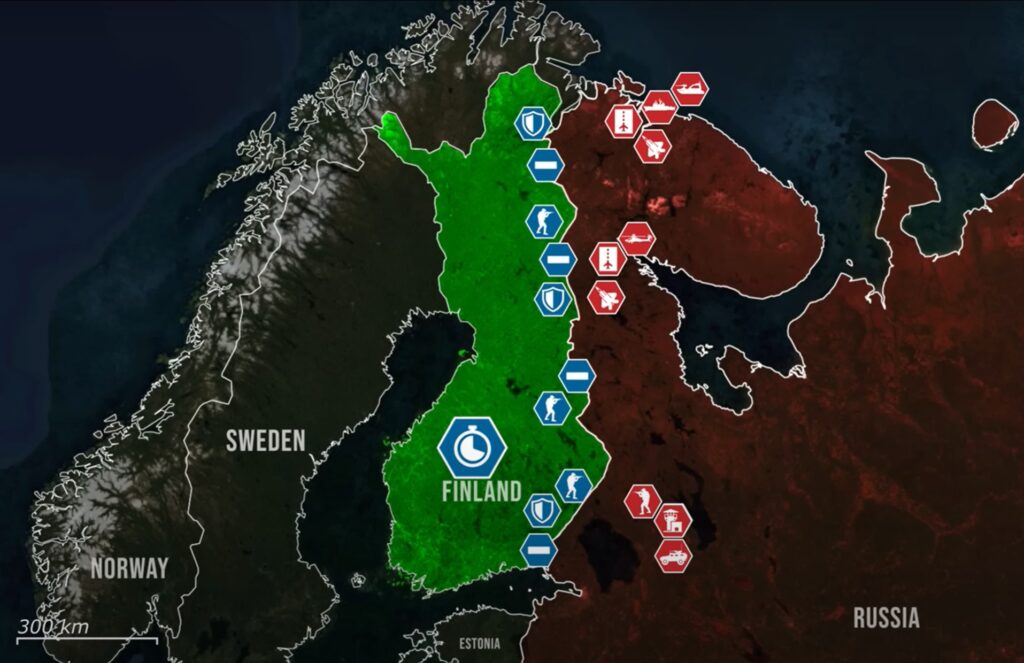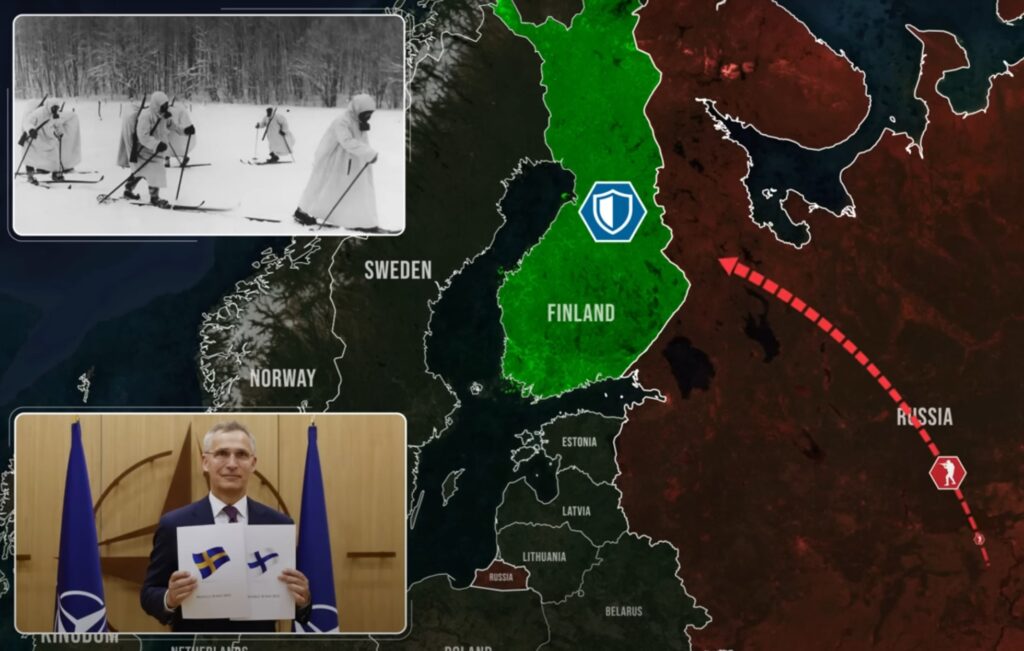Today, there are interesting updates from NATO’s northern flank. Here, Russia has started rapidly escalating the tensions by building up forces and constructing new bases on the border with Finland. The Scandinavian country has been attacked by Russia before, so the Finns did not wait and immediately began preparing for the worst-case scenario.
Russia has begun a notable militarization of its extensive border with Finland, significantly escalating its military presence through the construction of new bases and the redeployment of forces. Recent satellite imagery, confirmed by NATO officials, reveals extensive activity, including rows of newly erected tents, warehouses for military vehicles, refurbished fighter jet shelters, and revitalization of a previously abandoned helicopter base.
These developments indicate the preliminary stages of a substantial, long-term military buildup, although NATO and Finnish officials emphasize this is still different from Russia’s pre-Ukraine attack deployments in 2022. The reason for this is that Russia remains predominantly occupied with its military operations in Ukraine, limiting immediate troop availability.

Border turns hot
The catalyst for Russia’s border militarization was Finland’s accession to NATO two years ago. Initially, Russian President Vladimir Putin publicly stated that Finland’s NATO membership was Finland’s sovereign right, and he had no problem with it. Yet, Russia quickly shifted its posture, rapidly militarizing the border area, which has now become NATO’s longest contiguous boundary with Russia, spanning approximately 1,330 kilometers.
Russia’s actions reveal underlying apprehensions; historically, new NATO membership, particularly involving former Soviet states such as the Baltic republics, has been perceived by Moscow as provocative, significantly heightening security concerns. Consequently, the addition of Finland to NATO is interpreted by Russia as an increased threat, necessitating enhanced defenses.
Military analyst Michael Kofman of the Carnegie Endowment predict that Russia will significantly expand its ground forces facing NATO, particularly in sensitive regions such as Finland’s northern frontier.

Arctic in play
Russia’s buildup is also strongly tied to strategic interests in the Arctic. Moscow regards control over Arctic regions as essential for securing its status as a great power. Satellite imagery recently confirmed Russian military helicopters returning to Murmansk, a strategic Arctic port city, after a two-decade absence.
This redeployment, partially driven by Ukrainian drone strikes targeting Russian airfields deeper within the country, places Russian forces considerably closer to NATO territory. According to Finnish defense analysts, Russia is also expanding brigades into divisions, implying an imminent surge in Russian troop strength along the border.

Bases reinforced
Russia has upgraded several military bases near Finland to enhance its defense capabilities. Key bases include Alakurtti Air Base, which supports cold-weather operations and Arctic defense, and Petrozavodsk, which offers armored vehicle storage and troop mobilization. Severomorsk-2 strengthens Arctic naval and air operations, while Olenya Air Base facilitates strategic bomber activity and large-scale operations, less than 150 kilometers from Finland, with significant infrastructure improvements indicating plans for an even larger military presence.
These upgrades provide Russia with rapid deployment capacity and enhanced surveillance, strengthening its position in a potential clash. These provocative developments follow a series of incidents underscoring rising tensions. From damaging undersea cables to satellite imagery exposing substantial Russian military expansion near Finland, this has prompted Helsinki’s military intelligence head, Brigadier General Pekka Turunen, to predict that Russian troop numbers near Finland could triple within five years.
Finland digs in
Consequently, Finland extended its indefinite border closure with Russia, citing the ongoing hybrid warfare tactics, including weaponized migration, similar to what Poland is experiencing on its border with Belarus.
Further intensifying tensions, in May and June 2025, Russia redeployed battle-hardened troops from Ukraine and intelligence specialists to the Finnish border, significantly bolstering strategic bases and violating Finnish airspace, prompting a diplomatic confrontation.

History drives Finland
Facing this steadily rising threat, Finland is actively enhancing its defensive posture by emphasizing a pragmatic approach and preparing for worst-case scenarios, by increasing defense spending and raising reservist eligibility to age 65. Finnish military planners forecast that once active hostilities in Ukraine diminish, Russia will substantially increase deployments along Finland’s border, prompting predictions of a possible armed confrontation soon after.

Overall, Finland’s defensive measures originate from a historical memory deeply shaped by past aggression from Russia, notably during the Winter War of 1939 to 1940, resulting in substantial territorial losses. The recent rapid militarization by Russia reaffirms Finland’s decision to swiftly join NATO following Russia’s invasion of Ukraine in 2022.
Now, Russia is stepping up the provocations by starting to build up forces along the border, which is enough to make the Finnish government suspicious.
In our regular frontline report, we pair up with the military blogger Reporting from Ukraine to keep you informed about what is happening on the battlefield in the Russo-Ukrainian war.




